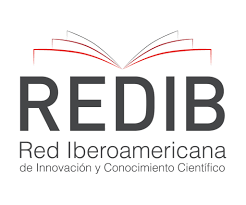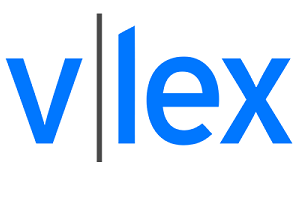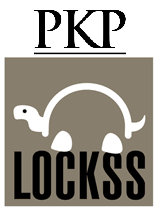THE PROBLEM OF DEFINING STAKEHOLDERS IN A SUSTAINABLE DEVELOPMENT GOAL CONTEXT, EXAMINED VIA THE ANALYSIS OF ENVIRONMENTAL CONSERVATION PROJECTS.
DOI:
https://doi.org/10.51743/ihering.213Keywords:
Conservation project, Non-human actor, Project management, Project stakeholder, SustSustainable Development Goal, Sustainability, Sustainable Development Goal 17Abstract
There has been to date only limited consideration within the project management discipline of nonhuman actors as primordial stakeholders in projects. However, the inclusion of the roles of nonhuman actors is essential, when we consider that many projects in many areas, both within and outside the field of environmental conservation itself, such as for example in the fields of business and management, depend on natural resources for the development of their products. Despite this, natural resources tend to be overlooked in the stakeholder maps of projects in this wider context. Environmental Conservation projects are themselves especially interesting to study with regards to their stakeholder context and have been used as the experimental setting for the empirical work of this study. The primordial stakeholders of these projects are not social objects and therefore go beyond what are currently generally regarded as the limits of stakeholder theory. The study that has been used to analyse this concept is a marine conservation project based in Spain, whose primordial actor is not human. Unfortunately, these stakeholders being non-human are therefore not able to express themselves, and therefore are rarely purposely included in stakeholder analysis and management approaches, thus limiting comprehensive stakeholder mapping analyses ab initio, and handicapping realistic consideration of nonhuman actors. This study may be extrapolated and applied to the United Nation´s Sustainable Development Goal (SDG) 17, “Partnership for the goals”, with reference to SDG 14, which deals with marine conservation.
Downloads
Global Statistics ℹ️
|
555
Views
|
883
Downloads
|
|
1438
Total
|
|
References
Bendheim, C.L., Waddock, S.A. & Graves, S.B. (1998). Determining Best Practice in Corporate Stakeholder Relations Using Data, Envelopment Analysis. Business and Society 37(3), 306-448. DOI: https://doi.org/10.1177/000765039803700304
Callon, M. Some elements of a sociology translation: domestication of the scallops and fishermen of St Brieuc Bay”. In: Law, J. Power, Action and Belief: A -New Sociology of Knowledge. London, United Kingdom: Routledge & Kegan Paul; 1986. pp. 277-303.
Callon, M., Latour, B. Unscrewing the big Levathan: how actors macrostructure reality and how sociologists help them to do so. In: Knorr-Cetina, K., Cicourel, V. Advances in social theory and methodology: towards an integration of micro- and macro- sociologies. Boston, United States: Routledge & Kegan Paul; 1981.
CSIC (2021 July 12th) El CSIC. https://www.csic.es/es/el-csic
Driscoll, C. & Starik, M. (2004). The Primordial Stakeholder: Advancing the Conceptual Consideration of Stakeholder Status for the Natural Environment. Journal of Business Ethics, 49:55-73. DOI: https://doi.org/10.1023/B:BUSI.0000013852.62017.0e
Freeman, R.E. (1984). Strategic Management: A Stakeholder Approach. Cambridge, CUP.
Gladwin, T.N., Kennelly, J.K. & Krause, T.S. (1995). Shifting Paradigms for Sustainable Development: Implications for Management Theory and Practice. Academy of Management Review, 20(4): 874-907. DOI: https://doi.org/10.5465/amr.1995.9512280024
Goedeke, T.L. & Rikoon, S. (2008). Scientific Controversy, Dynamism of Networks, and the implications of Power in Ecological Restoration. Social Studies of Science 38(1): 111-132. DOI: https://doi.org/10.1177/0306312707077363
Grupo Tragsa (2021 July 12th). Misión, Vision y Valores. https://www.tragsa.es/es/grupo-tragsa/quienes-somos/Paginas/mision-vision-y-valores.aspx
IUCN. About International Union for Conservation of Nature. Available from: https://www.iucn.org/about (Accessed on 1 March 2021)
Missioner, S., Loufrani-Fedida, S. Stakeholder analysis and engagement in projects: From stakeholder relational perspective to stakeholder relational ontology. International Journal of Project Management, 2014; 32: 1108-1122. DOI: https://doi.org/10.1016/j.ijproman.2014.02.010
Nasi, J., Nasi, S., Philips, N. & Zyglidopoulos, S. (1993). “What is Stakeholder Thinking? A Snapshot of a Social Theory of the Firm”, in J. Nasi (ed), Understanding Stakeholder Thinking. Helsinki, LSR-Julkaisut Oy, 19-32.
PMI, 2017
Revitalizing the Global Alliances for Sustainable Development: Analyzing the Viability of Sustainable Development Goal 17—A Multi-Actor Governance Approach
Sach, JD. From Millennium Development Goals to Sustainable Development Goals. The Lancet, 2012; 379 (9832): 2006-2211. DOI: https://doi.org/10.1016/S0140-6736(12)60685-0
Stead, J.C. & Stead, W.E. (2000). Ecoenterprise Strategy: Standing for Sustainability. Journal of Business Ethics, 24(4): 313-329. DOI: https://doi.org/10.1023/A:1006188725928
Tryggestad, K., Justesen, L. & J. Mouritsen. (2013). Project temporalities: how frogs can become stakeholders. International Journal of Managing Projects in Business 6(1): 69-87. DOI: https://doi.org/10.1108/17538371311291035
United Nations (2021 March 1). 17 Goals to Transform our World. https://www.un.org/sustainabledevelopment/
Winch, G. (2010). Managing construction projects. Blackwell Publishing Ltd. Iowa, USA.
Winch, G. (2016). “Megaproject Stakeholder Management” in The Oxford Handbook of Mega-project Management (Ed. Bent Flyvbjerg). Oxford: Oxford University Press. DOI: https://doi.org/10.1093/oxfordhb/9780198732242.013.14
Downloads
Additional Files
Published
How to Cite
Issue
Section
License
The Fundación Universitaria Española publishing house preserves the patrimonial rights (copyright) of published works, and encourages and allows their reuse. The works are published in the electronic edition of the journal under a license "Creative Commons Attribution / Attribution-NonCommercial 4.0 International Public License - CC BY-NC 4.0", and can be copied, used, disseminated, transmitted and publicly exhibited.
The undersigned author /s partially transfer the property rights (copyright) of this work to the Fundación Universitaria Española (Spain) (NIF: G28433670), for the printed and online editions.
It also declares to have respected the ethical principles of research and to be free from any conflict of interest.

























1.png)
1.png)

1.png)
.png)
.png)

.png)
1.png)
1.png)
